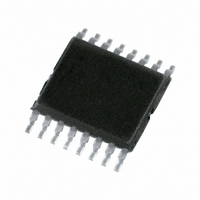PCA9531PW,112 NXP Semiconductors, PCA9531PW,112 Datasheet - Page 22

PCA9531PW,112
Manufacturer Part Number
PCA9531PW,112
Description
IC LED DRIVER RGB 16-TSSOP
Manufacturer
NXP Semiconductors
Type
RGB LED Driverr
Datasheet
1.PCA9531BS118.pdf
(27 pages)
Specifications of PCA9531PW,112
Topology
Open Drain, PWM
Number Of Outputs
8
Internal Driver
Yes
Type - Primary
Backlight, LED Blinker
Type - Secondary
RGB
Frequency
400kHz
Voltage - Supply
2.3 V ~ 5.5 V
Mounting Type
Surface Mount
Package / Case
16-TSSOP
Operating Temperature
-40°C ~ 85°C
Current - Output / Channel
25mA
Internal Switch(s)
Yes
Lead Free Status / RoHS Status
Lead free / RoHS Compliant
For Use With
568-4003 - DEMO BOARD LED DIMMER568-3615 - DEMO BOARD I2C
Voltage - Output
-
Efficiency
-
Lead Free Status / Rohs Status
Details
Other names
568-3370-5
935274729112
PCA9531PW
935274729112
PCA9531PW
NXP Semiconductors
14. Handling information
15. Soldering of SMD packages
PCA9531_6
Product data sheet
15.1 Introduction to soldering
15.2 Wave and reflow soldering
15.3 Wave soldering
All input and output pins are protected against ElectroStatic Discharge (ESD) under
normal handling. When handling ensure that the appropriate precautions are taken as
described in JESD625-A or equivalent standards.
This text provides a very brief insight into a complex technology. A more in-depth account
of soldering ICs can be found in Application Note AN10365 “Surface mount reflow
soldering description” .
Soldering is one of the most common methods through which packages are attached to
Printed Circuit Boards (PCBs), to form electrical circuits. The soldered joint provides both
the mechanical and the electrical connection. There is no single soldering method that is
ideal for all IC packages. Wave soldering is often preferred when through-hole and
Surface Mount Devices (SMDs) are mixed on one printed wiring board; however, it is not
suitable for fine pitch SMDs. Reflow soldering is ideal for the small pitches and high
densities that come with increased miniaturization.
Wave soldering is a joining technology in which the joints are made by solder coming from
a standing wave of liquid solder. The wave soldering process is suitable for the following:
Not all SMDs can be wave soldered. Packages with solder balls, and some leadless
packages which have solder lands underneath the body, cannot be wave soldered. Also,
leaded SMDs with leads having a pitch smaller than ~0.6 mm cannot be wave soldered,
due to an increased probability of bridging.
The reflow soldering process involves applying solder paste to a board, followed by
component placement and exposure to a temperature profile. Leaded packages,
packages with solder balls, and leadless packages are all reflow solderable.
Key characteristics in both wave and reflow soldering are:
Key characteristics in wave soldering are:
•
•
•
•
•
•
•
•
Through-hole components
Leaded or leadless SMDs, which are glued to the surface of the printed circuit board
Board specifications, including the board finish, solder masks and vias
Package footprints, including solder thieves and orientation
The moisture sensitivity level of the packages
Package placement
Inspection and repair
Lead-free soldering versus SnPb soldering
Rev. 06 — 19 February 2009
8-bit I
2
C-bus LED dimmer
PCA9531
© NXP B.V. 2009. All rights reserved.
22 of 27












